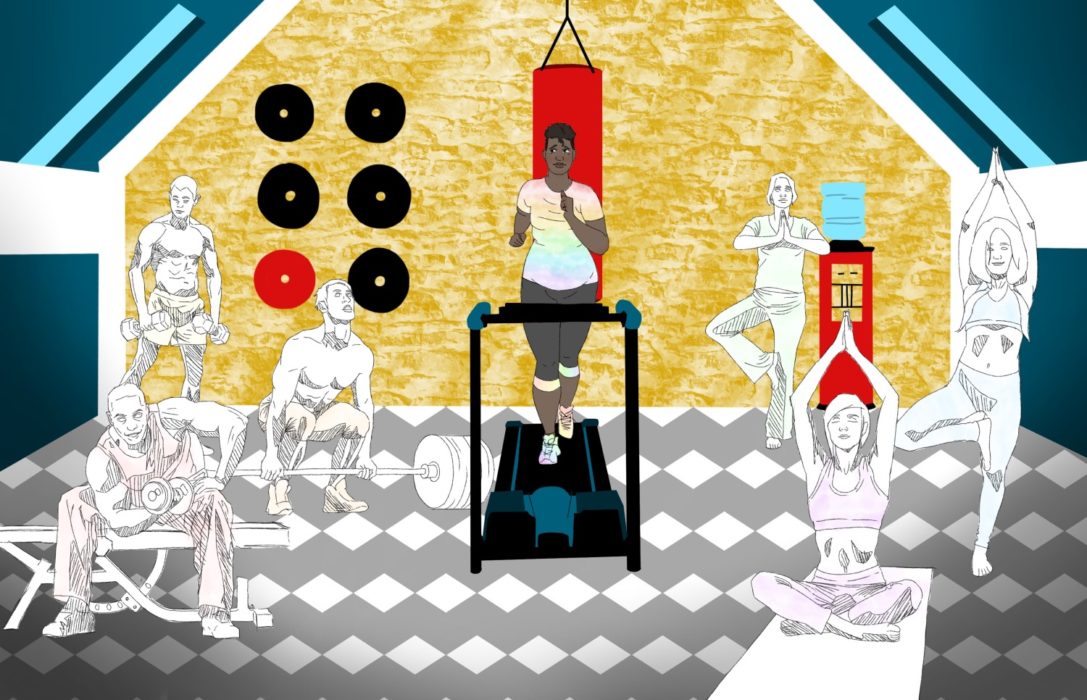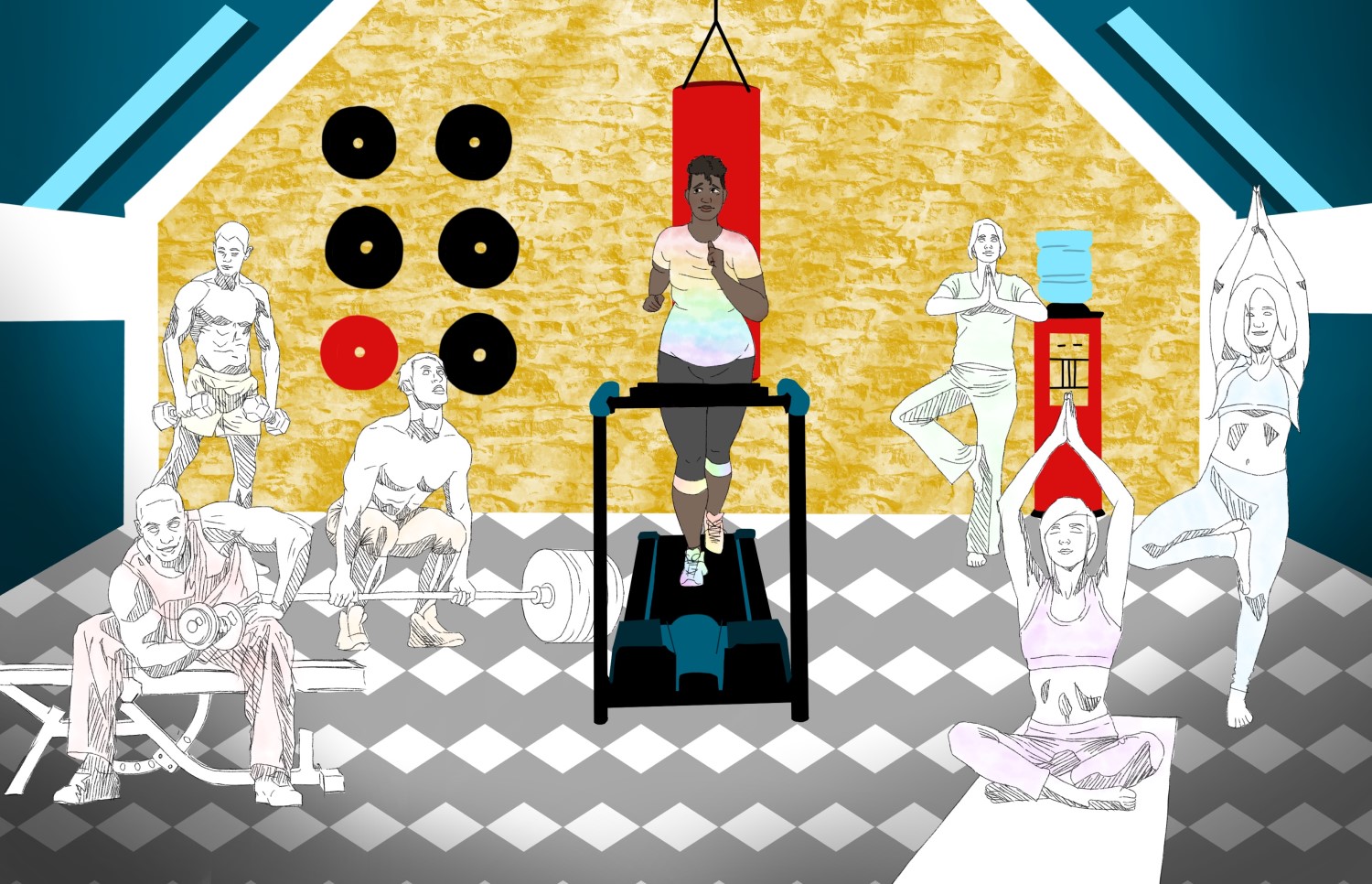
It didn’t take Maria Rodriguez long to realize the Tacoma, Washington, gym where she worked and trained was lacking in diversity. “Brown and black people simply were not involved in the gym,” she said. “And I know I’m living in a very white location, so for a while I honestly didn’t think there were any other people of color around.”
Rodriguez, a former yoga teacher turned strength coach and competitive powerlifter, had firsthand experience with how certain barriers could keep people like her out of fitness spaces. In 2017, she competed at the USA Powerlifting (USAPL) national competition in Florida. The competition was expensive, and she didn’t think she could afford to go. “But I realized that I needed to go, because I was not going to give up this space at this competition that was mine, as a queer Latina woman in powerlifting,” Rodriguez said. So she fundraised by printing up some shirts to raise money for the cause. The yellow print across the chest read: Fear Her Fight. The shirts sold out.
Rodriguez competed one more time in the USAPL national competition in 2018, in Spokane, Washington. “It was brutal. I just kept looking around at all the competitors and wondering, ‘If these are the top powerlifters in the country, are only white people strong? Are only straight people strong? Where are my trans lifters?’ So I decided this isn’t for me anymore. Maybe the sport is, but the organization isn’t.”
After facing racism from personal training clients, witnessing homophobia and transphobia in the powerlifting community and fat shaming in everything from Instagram influencers to gym marketing materials, Rodriguez decided to do more. She started a company, Fear Her Fight Athletics, to sell shirts with intersectional feminist messaging. To cultivate a more diverse fitness community, she convened the Womxn’s Strength Summit, which held its second annual event last week. About 150 people met at a Tacoma gym to listen to speakers, compete, and talk about how the strength and fitness world can do a better job catering to people like those in attendance: mostly women, people of color, and members of the LGBTQ community.
In the West, fitness is something we take seriously. According to a Gallup poll that tracks the frequency of exercise among several demographics, people in the West are the most likely to exercise frequently, a fact that’s remained consistent as long as they’ve done the polling. Hiking, trail running, skiing, and cycling are baked into the identities of many Western towns. But it’s no secret that the fitness industry has a diversity problem: just take a look at who’s on the trail, or attending classes at your local Crossfit, spin studio, or barre class. Easier still, peek at their marketing material to see, most likely, slender white women or muscular white men.
Many fitness spaces, especially the trendy, boutique gyms and exercise classes that are rapidly expanding in booming urban areas, can feel downright unwelcoming to people who don’t fit a very specific mold. And this has an impact. According to a study published in JAMA Pediatrics in 2018, 73 percent of young men stay active after high school, but just 62 percent of young women do. And the disparity for women of color is especially stark. In their teens, 70 percent of young black women report being physically active, but by the time they hit their 20s, that number drops to 45 percent.
Seacgo Rollins, of Seattle, got into fitness through workout classes, and eventually joined a local Crossfit gym. Its tight-knit community, she felt, wasn’t really accepting of her.
“To be blunt, most places that I go in Seattle, I’m one of the only people of color in the room,” Rollins said. “And Crossfit was one of the whitest spaces I’d ever seen.”
What did appeal to Rollins was the weightlifting she learned in Crossfit, so she searched for a new gym. It took her some time to find one that felt comfortable. At a few, men tried to explain lifting mechanics to her when they saw her using a barbell. “I’ve definitely been asked, ‘Are you sure you know what you’re doing?’”
The second day of the Womxn’s Strength Summit included a powerlifting meet, Crossfit tournament, and wrestling and self-defense instruction. Rollins competed in the powerlifting event, her first competition. She was encouraged by what she sees in this small, but growing, community encouraging diversity in fitness via Instagram.
“In powerlifting specifically, you’re seeing that more women are getting involved, more women of color are getting into it,” she said. “That visibility matters, showing more people that aren’t necessarily that very thin body, but bodies that can be big, that can be built. That all helps more people feel welcome.”
That sentiment resonated with Shravya Guda, who attended the summit from San Francisco. “I’m Indian-American and … significantly bigger than the average Indian woman,” Guda said. “When I’ve worked out in my hometown, I’ve had other Indian women come up to me and tell me that maybe I should do more cardio, and that I’d be pretty if I were skinnier.”
A former competitive athlete in swimming and water polo, Guda says powerlifting has changed the way she thinks about fitness. “For the first time in my life … I realized that the strongest me isn’t the smallest me.”
Some gyms are taking purposeful strides to embrace a diverse and inclusive clientele. Lizelle Din is a personal trainer at Strive and Uplift, a woman-owned gym in Seattle’s Ballard neighborhood. “We defend that kind of mentality here,” she said. “So if someone does come into the space and we feel like they’re disrespecting it, we have a conversation with these people and tell them what it means to be here and to respect the people that are here.”
On June 16, Strive and Uplift will host another powerlifting meet called Pull for Pride aimed at opening the sport to a nontraditional powerlifting crowd and supporting LGBTQ charities at the same time. Ten cities — including Boise, Oakland, and Denver — will host Pull for Pride events during Pride month this year. Fitness events and spaces that cater specifically to LGBTQ people and their allies seem especially timely in light of events happening on the bigger athletic stage, like the ban on transgender athletes that USAPL enacted this year, and the ongoing controversy about South African Olympic runner Caster Semenya’s testosterone levels. While little research has been done on the physical activity levels of the LGBTQ population, at least one study, published in the Annals of Behavioral Medicine in 2014, has noted that youth who identified as gay, lesbian, or bisexual were less physically active than their heterosexual peers from as young as age 12.
Rodriguez sees a more inclusive gym culture as a big-picture goal for her summit and her company down the line. “I would love for people to be able to come to the gym and know there are policies in place … that make it a safe space, so clients aren’t harassed or triggered.” She knows that economics play a part too. “Economically speaking, gym prices are off the charts — that’s a barrier.”
But breaking those barriers down is what she aims to do. To Rodriguez, exercise is a right that too many people can’t access. “It’s really important to me that you are able to empower yourself with the body you have, however you want,” she said. “That’s the kind of feeling that will make you show up bigger in the world, that will help you walk into a room more secure in yourself.”
And that might just change more than the gym. “Obviously the whole world needs to change,” she said. “But the gym is a microcosm.”

